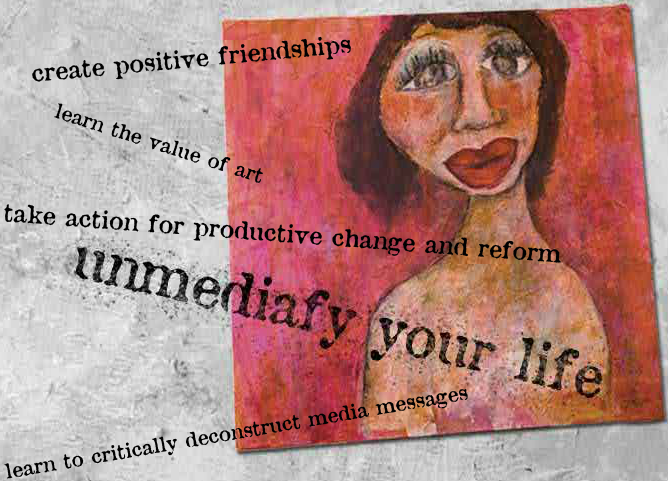 Sept. 23, 2015 Can’t think of a better “Wordless Wednesday” than this powerful art exhibition “Hidden in Plain Sight” which speaks volumes in its visual insight.
Sept. 23, 2015 Can’t think of a better “Wordless Wednesday” than this powerful art exhibition “Hidden in Plain Sight” which speaks volumes in its visual insight.
Creator and artist Kelly Parks Snider founder of youth led media literacy organization Project Girl uses her art as a storytelling vehicle for culture jamming, critical thinking and making waves in oceans of “brand brainwashing” as she calls her cartoon art activism about deceptive beauty and perpetuation of ‘perfect’ ideals. In much the same way iconic documentary filmmaker and media critic Jean Kilbourne uses the camera lens in her Killing Us Softly series to capture a poignant narrative on the impact of sexualization and appearance driven cues in our culture, (feature on Jean Kilbourne’s pioneering efforts and her Oct. 3 Women’s Hall of Fame 2015 induction honor upcoming!) Kelly Parks Snider’s newest exhibition “Hidden in Plain Sight” this fall at the River Arts Center Gallery in Wisconsin (and hopefully touring regionally soon) is described by the gallery as…
“an innovative and ambitious project…She holds nothing back. Tackling an impressive range of subjects, she makes us confront reality in all its starkness. She grabs your gut, she discomforts your soul, she challenges your brain.”
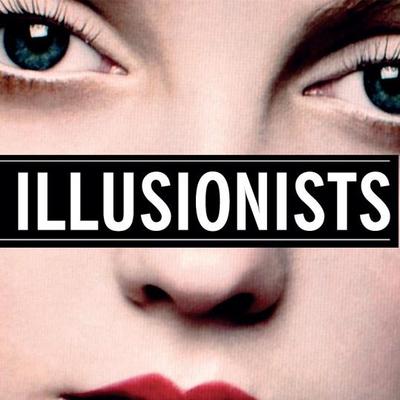 YES! My kind of shoulder shaking media literacy maven out to create a tsunami of change!
YES! My kind of shoulder shaking media literacy maven out to create a tsunami of change!
Kelly is also keeping with the spirit of dear colleague and director/producer Elena Rossini of The Illusionists documentary where I’m a film advisor/partner about the topic of the globalization of beauty…and where (yes, Jean Kilbourne again) is interviewed at length on her decades of work in this realm…and where I might add, her TED talk on “The Dangerous Ways Ads See Women” is must see TV.
Beginning to see a pattern?
Amazing artistry and activism blending into form and function to reach an entirely new generation who desperately needs to hear (and heed!) the youth clarion call NOT to let the media define them before they can even define themselves!
“We have been trained NOT to see. This exhibition is about that.”
Without further ado…This is Panel One of a three-panel collage (click to enlarge) titled “You’ve Come a Long Way Baby” as the artist reflects her own searing wry wit and media literacy expression of truth telling irony.
Kelly Parks Snider smacks up against social convention and shares how the work “juxtaposes woman’s century of struggle for equality against these calling cards of advertising. Below the horizontal line lies the truth of her protests, and her victories over the decades. Above the line, the many lies and misrepresentations of the advertising industry. The final panel depicts where society is now, not knowing what is real and true.”
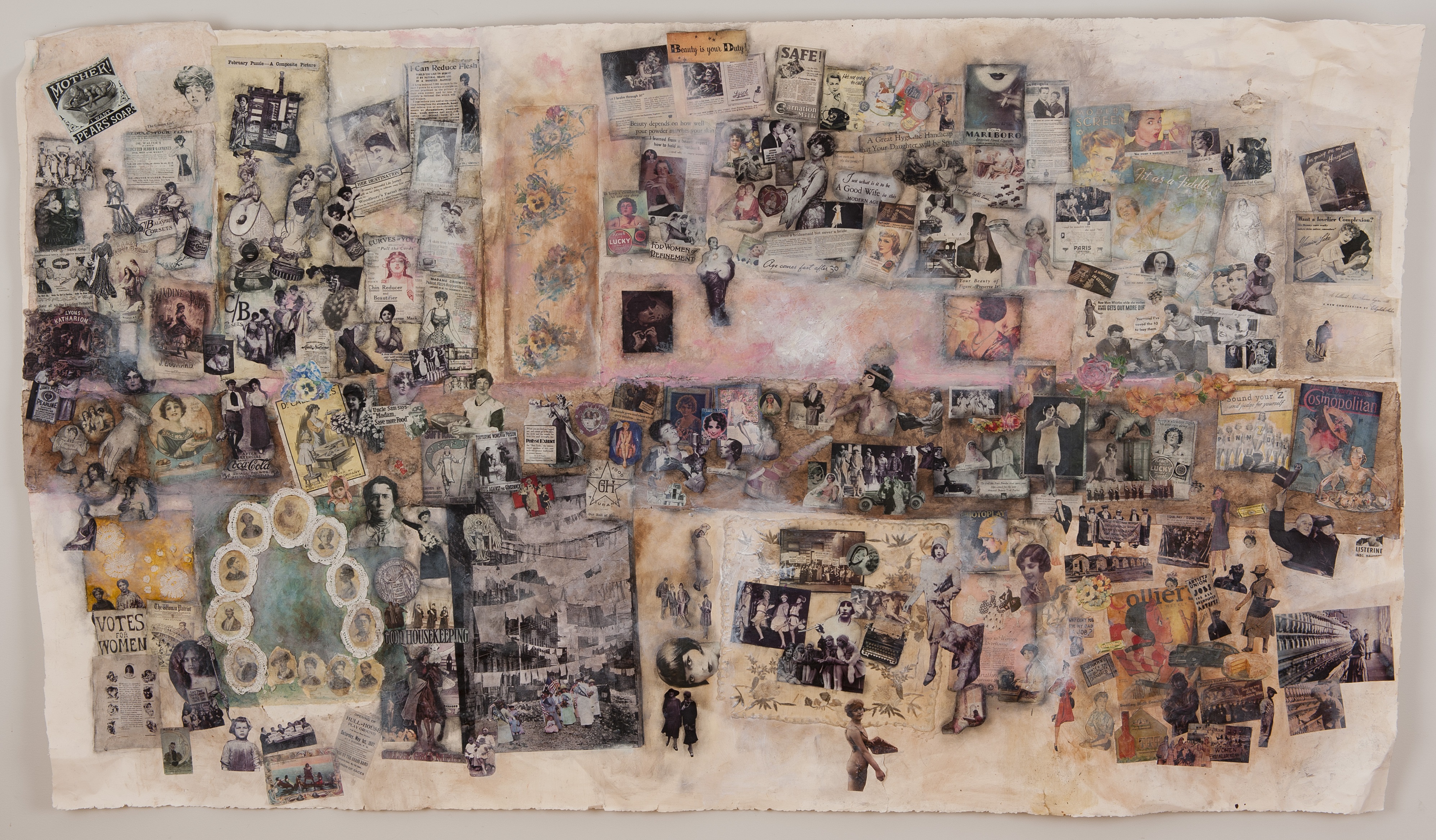
In her open letter via email she reveals more about her inspiration:
“As an artist, I am interested in exploring contemporary social issues. With words and art I attempt to increase awareness about these issues translating cultural, political and social dialog into something more imaginative. As an activist I explored complex, highly charged issues using visual expression to comment on the sometimes-invisible truths about power and privilege, inequality and injustice, trying to reveal these discoveries using art, attempting to translate my journey into large-scale visual media narratives, collage, steel sculpture and wood sculpture.
Determined to make sense of these truths, I sought out leading thinkers on racial, social, political and cultural issues, and individuals with first-hand experience of injustice, to gain from their insights, translating what I learned into art…”
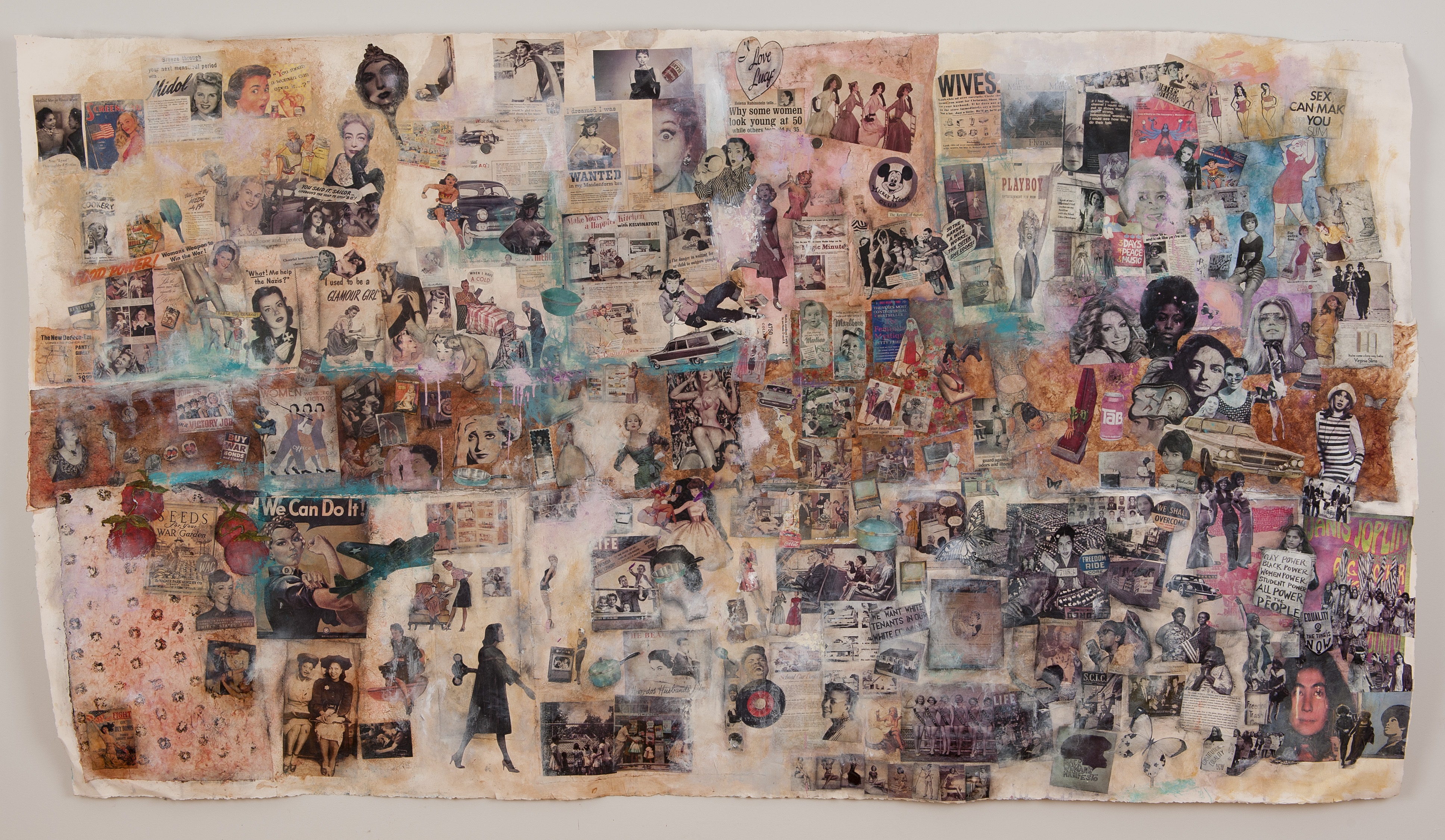 …”I tried to take time and watch, listen and amplify my sensibilities illuminating something that might be worth revealing. In that effort, I have attempted to give my observations reverence. My collaborators and I hope that you can feel this reverence and through this art we can move closer to a society in which many forms of injustices are revealed and confronted…so we can think more honestly and love more openly.”
…”I tried to take time and watch, listen and amplify my sensibilities illuminating something that might be worth revealing. In that effort, I have attempted to give my observations reverence. My collaborators and I hope that you can feel this reverence and through this art we can move closer to a society in which many forms of injustices are revealed and confronted…so we can think more honestly and love more openly.”
…”In many ways, we have been bluffed.. Through TV and the Internet, we take in vast amounts of information. We don’t do the best job filtering it. In many ways, we have been bluffed. Our lives more guided my unconscious myths, mediated stereotypes and slogans then truth.
My hope is that this exhibition provides a critical lens, an opportunity to focus with a greater sense of truth. My hope is that this art brings focus to our lives so we can ask questions about the world that surrounds us.
We have been trained not to see. This exhibition is about that.” –Kelly Parks Snider
We’ve Come A Long Way, Baby…Or Have We?
This final panel 3 includes several iconic images from Jean Kilbourne’s Killing Us Softly and Slim Hopes…Have we “come a long way, baby?”
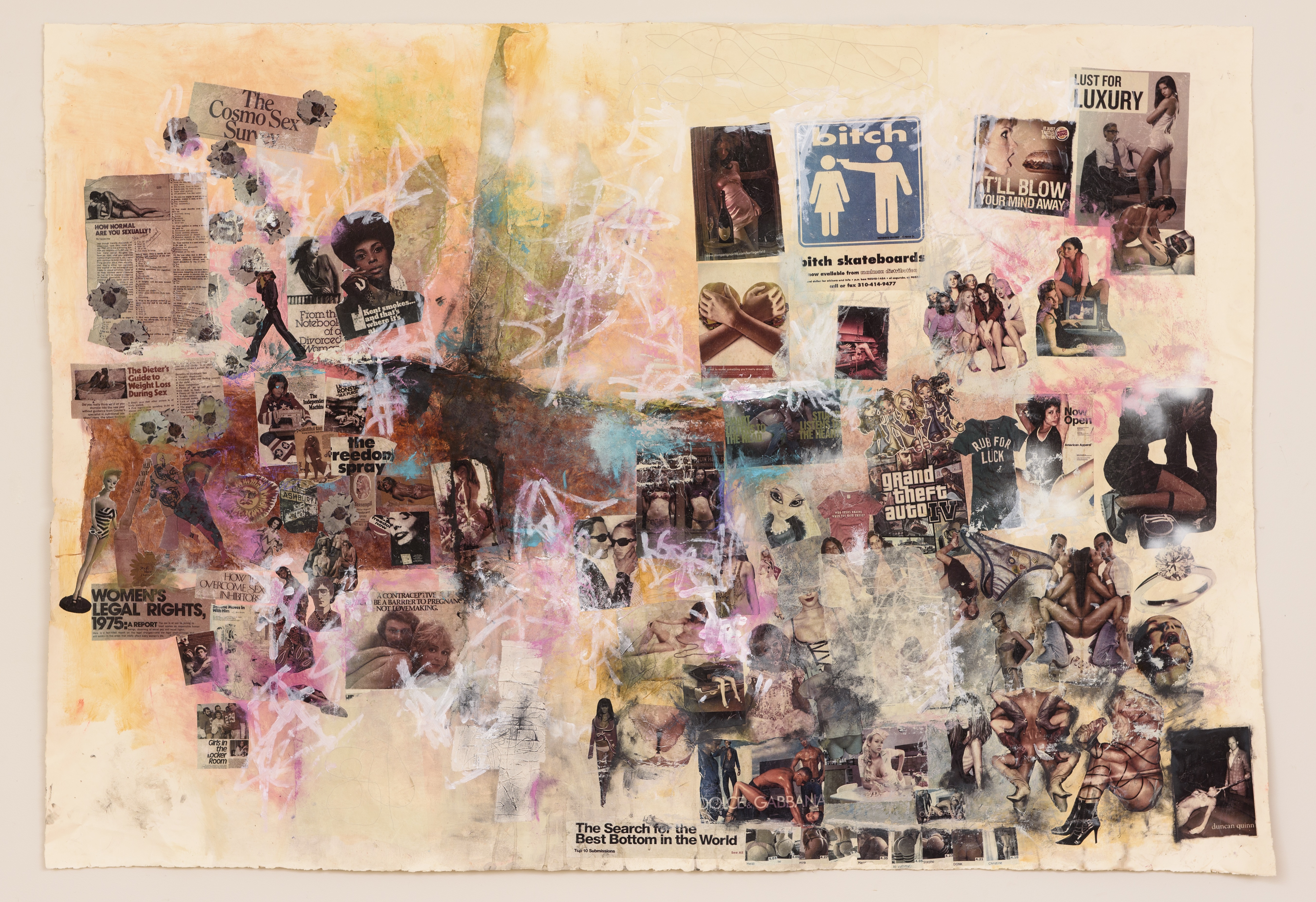
Personally, (and statistically) I feel this generation has been impacted by media machinations in profound, life altering ways that could use some extreme culture jamming and counter-marketing on the saturation and surround sound empowerment front…
In short? In some ways I think we’ve gone backwards in the appearance cues and self-worth landing on teen girls particularly…I think we’ve got a loooooooooooooooong way to go to ‘get back to where we once belonged’…inching forward and uplifting adolescent health and wellness on a global scale.
Recent/Related Reading on Shaping Youth
Lottie Dolls: Positive Picks for Healthier Play
Joe Kelly on Eating Disorders, Dads-n-Daughters Outreach for Men
ModCloth Offers a Positive Pledge Toward Public Health
Truth in Advertising: A Bipartisan Body Image Bill Addressing Children’s Health
Olympic Teaching Moments: Body Image and Influence on Kids
Recent Resources: Media Influence on Body Image
Jean Kilbourne’s Resources for Change: Media Literacy Links (including Shaping Youth!)
Jean Kilbourne’s Resources for Change: On Advertising & Corporate Power (inc Shaping Youth)
Mar. 19, 2014: Fresh Stats from GirlGuiding UK, launching ‘body confidence’ badge (The Guardian)
Mar. 10, 2014: Body Image Pressure Increasingly Affects Boys (The Atlantic)
Mar. 11, 2014: How Movies Fuel Boys’ Insecurities (Time)
Feb. 26, 2014: Necks, Butts Growth Areas for U.S. Plastic Surgeons (Health Day News)
Feb. 26, 2014: Kids’ Body Image Shaped By Parents (Health Day News)
Fast Facts: Teen Health and the Media (National Institute on Media & Family)
Media Literacy Infographic: Media and Body Image (NEDA)
AMA Jan. 2014 Study/Boys: JAMA Pediatrics
Teen Boys Who Think They’re Skinny May Be At Higher Risk for Depression (Health Day News)
Infographic/Stats: Girls and Media (NEDA) Boys and Media
Stats Compilation Below Via “Just Say YES: Youth Equipped to Succeed”
- 40% of all 9 and 10-year-old girls have already been on a diet – Duke University
- 70% of 6-12-year-olds want to be thinner – National Eating Disorders Association
- In one study, 3 out of 4 women stated that they were overweight although only 1 out of 4 actually were – Rader Programs
- While only one out of ten high school girls are overweight, nine out of ten high school juniors and seniors diet – Rader Programs
- A study found that adolescent girls were more fearful of gaining weight than getting cancer, nuclear war or losing their parents – Rader Programs
- Teen pregnancy statistics show that girls who engage in unprotected sex often have lower self esteem – Family First Aid
- 69% of girls in 5th – 12th grades reported that magazine pictures influenced their idea of a perfect body shape – National Association of Anorexia Nervosa and Associated Disorders
- Following the viewing of images of female fashion models, seven out of ten women felt more depressed and angrier than prior to viewing the images – Rader Programs
- 80% of women who answered a People magazine survey responded that images of women on television and in the movies make them feel insecure – Rader Programs
- The body type portrayed in advertising as the ideal is possessed naturally by only 5% of American females – National Association of Anorexia Nervosa and Associated Disorders
- An average US woman is 5’4” tall weighing 140 pounds; the average US model is 5’11” weighing 117 pounds – West Virginia Dept of Education









Speak Your Mind